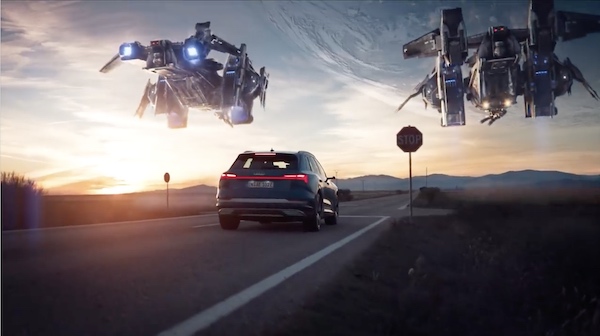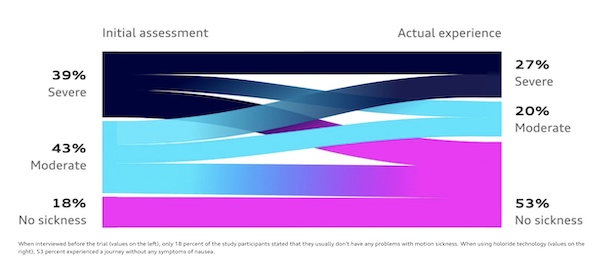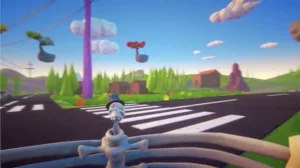If you ever been with children in a car on an extended road trip, you have heard these dreaded words more often than you would like to admit. On the other hand, they also apply perfectly fine to the state of VR applications.
Depending on what market segment you are looking at, the answer seems to be always the same. Mass adoption driven by broad consumer applications has been slow over the last few years. Even gamers have been slow to spend their money on a headset, a better graphics card is still more enticing. Professional applications, that provide a measure for the return on investment in some areas, are clearly the way to go. Everyone in the industry is hoping for the ultimate app that catapults VR into the consumer gadget stratosphere creating the ‘Next Big Thing’. So far this hasn’t happened yet.
The German startup holoride (a spinout from Audi) is working closely with Audi, Porsche, Mercedes and Ford to develop a VR experience to make the question ‘Are we there yet?’ go away for good (the one in the car that is). This is at least what their technology is promising. The company was founded in 2019 and the technology was first shown at CES 2019 where the app got very good reviews. Since you have to sign up long before the actual show days to get a spot at CES, we can assume that Audi played a significant role in bringing them to Las Vegas this year.
holoride VR Experience, credit holoride
So what do they offer? They are developing a technology platform that allows people in cars to use VR headsets while driving. So far this sounds not very interesting, however it looks pretty exciting in the video on their website. Thinking about how people still have an issue with cyber sickness in general, introducing any kind of VR content while driving seems counter-intuitive at best and straight out ruthless, at worst. Yet, holoride claims that their VR experience will actually reduce the risk of getting sick during usage.
 holoride VR Game, credit holoride
holoride VR Game, credit holoride
The key to their claim is that they invented a technology that allows the content to adapt to what is going on on the road. If the car brakes, your VR content will do the same, the car turns to the right, so will the action in the VR game / content. For example one of the content items they are showing on their website is a space shooting game. When the car turns sharply right, so does the space ship.
By making the real and virtual movements work in sync, the bodies response to any mismatch of sensor input is reduced and so the threshold for the user to develop cyber sickness is raised. A clever idea if it does indeed work. I imagine that their first approach was to put on a Oculus Rift and play some game while driving, with more than dire results. holoride calls this elastic content, which is actually a real good description on how this works. What a concept, a marketing term that is technically descriptive!
Audi published actual results from testing this system while driving and comparing the results to non driving VR experience. While they certainly can speak to the results after driving, it seems a little weak to compare that to statements users made about their earlier VR experience and susceptibility to cyber sickness. Nevertheless, it makes for a nice chart I do not want to leave out. Just take it with a grain of salt.
 Audi holoride experience results, credit Audi press release
Audi holoride experience results, credit Audi press release
They are using data from the car’s navigation system like travel route and time and combine this with vehicle data like steering, accelerating and speed. In essence they are trying to make a car a moving theme park, as they point out on their website.
“Trying to make a car a moving theme park”
The technology should work with available VR headsets and their unique software platform. There is no description of what other hardware will be needed. I assume that will be a function of the VR headset being used. Holoride is not a hardware developer, neither are they a content developer. They are working on a technology platform that will be made available to content developers and car manufacturers as a software development kit. So far the software kit is only in the alpha stage and not available to everyone. The say that the kit will soon be available to content providers. They also claim that their technology will be working with all cars independent of the brand or manufacturer.
Now the question is how this works in real life? In case you are curious and live either in Los Angeles, CA or Southern Germany you may be able to book a free test ride via the internet. The ‘Bride of Frankenstein’ LA ride is a tip of the hat to the upcoming Halloween holiday and starts in Universal City, LA and lasts about 10 min. The demo ride in southern Germany is available through a direct contact to holoride via email. The link is on their website.
Going back to the title of this article, holoride may have an answer for both interpretations of the question.
Considering the development of self driving technology in conjunction with the holoride technology, makes me very nervous about the future of driving on highways. If you think this is far fetched, I may want to state that Tesla’s Elon Musk plans for a driverless taxi system working in San Francisco in a just a few more years. Personal transportation may never be the same and as a positive side note, extreme backseat drivers may finally shut up. – NH

